Introduction to On-Page SEO and its Importance

In today’s highly competitive web world, an online presence is not just about having a website, but also about being seen among thousands of similar websites.
This is where the concept of #On-Page SEO comes into play.
On-page SEO refers to a set of actions performed within a website and on its content to improve its ranking in search engine results and attract more organic traffic.
The main goal of on-page SEO is to optimize the content and structure of the website for better search engine understanding, as well as to provide the best user experience to the audience.
This process includes optimizing various elements such as keywords, page titles, meta descriptions, URL structure, content, internal links, and page loading speed.
Although off-page SEO also plays a role in ranking, without a strong foundation of on-page SEO, off-page SEO efforts may prove fruitless.
Imagine you have a website with excellent content, but search engines cannot properly index it, or users leave it due to a poor user experience.
In this case, on-page SEO plays a vital role in increasing your website’s #visibility and helps search engines better understand the value and relevance of your content.
This area of SEO not only helps increase rankings but also ensures that your content reaches your target audience precisely, which in turn leads to an increased conversion rate and the success of your online business.
By correctly implementing on-page SEO techniques, you can ensure that your website is accessible and understandable to your audience and utilizes its full potential to attract organic traffic.
Without a strong strategy in on-page optimization, competing with other websites will be very difficult.
Tired of losing customers due to poor e-commerce website design? With Rasawweb, solve this problem forever!
✅ Increase sales and visitor-to-customer conversion rate
✅ Smooth and engaging user experience for your customers⚡ Get Free Consultation
Keywords in On-Page SEO: The Art of Discovery and Application
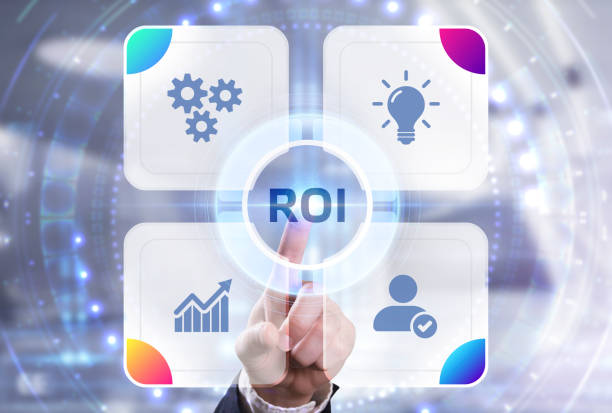
Keywords are the backbone of any on-page SEO strategy.
Finding the right keywords and optimally using them in your site’s content is one of the most vital steps towards improving ranking and attracting targeted traffic.
The keyword research process helps you understand what phrases users are searching for in search engines to find your information, products, or services.
This work is not just about finding high-volume keywords, but also about analyzing the user intent behind each search.
Is the user looking for educational information? Do they intend to buy? Or do they just want to learn about a specific brand? Answering these questions helps you choose relevant keywords and create content that meets the user’s needs.
After researching and finding primary keywords and long-tail keywords, the next step is intelligently integrating them into various page elements.
These elements include the Title Tag, Meta Description, headings (H1, H2, H3), the main text content, image filenames, and their Alt Text.
The important point here is to avoid keyword stuffing, as this practice is not only penalized by search engines but also severely degrades the user experience.
Instead, keywords should be placed naturally and smoothly within the text so that they are understandable to users and search engines can properly grasp the content’s thematic relevance.
Using related and synonymous keywords also helps search engines better understand the overall concept of your content.
A successful on-page SEO strategy includes competitor analysis, examining keywords they rank for, and finding content gaps that you can fill by producing valuable and targeted content.
In summary, the art in on-page SEO is precisely understanding your audience and their needs, and then creating content that addresses these needs through the intelligent use of keywords.
This approach is the foundation for the success of any website in attracting organic traffic and improving ranking in search results and forms a crucial part of on-page SEO optimization.
Content Optimization: The Master Key to Successful On-Page SEO

Content is king; this statement has become a reality in the world of SEO, especially in on-page SEO.
The quality and structure of content play a pivotal role in determining the success of your on-page SEO strategy.
Producing high-quality and comprehensive content not only sends positive signals to search engines but also provides real value to users, keeping them on your site for longer.
Optimized content should be informative, engaging, and responsive to user needs.
This means going beyond merely placing keywords; you must provide accurate, current, and reliable information.
Search engines like Google increasingly emphasize the E-A-T concept (Expertise, Authoritativeness, Trustworthiness); meaning your content should be written by an expert, be authoritative, and be trustworthy.
This is crucial for achieving high rankings in search results.
Structurally, your content must be readable and well-organized.
Using headings (H1, H2, H3, etc.) helps separate topics and increases readability.
Short paragraphs, the use of lists (bullet points), and relevant images all contribute to improving user experience and, consequently, on-page SEO optimization.
Additionally, question-provoking content that makes the user think or invites interaction can increase engagement rates.
This type of content can include in-depth reviews, case studies, or comprehensive comparisons that naturally encourage users to seek more information and stay on the page.
Content length is also important; comprehensive, longer articles that fully cover a topic usually perform better than short, superficial articles because they demonstrate to search engines that you are a comprehensive and complete resource in that field.
Optimizing images and videos using Alt tags and compressing file sizes is also an integral part of content optimization in on-page SEO.
The ultimate goal is to create content that is not only appealing to search engines but also delights users and converts them into loyal customers.
This demonstrates that on-page SEO is more than just a technique; it’s a comprehensive approach to providing value to both the audience and the search engine simultaneously.
In the following, a table for evaluating content quality is presented:
| Content Optimization Metric | Description | Importance in On-Page SEO |
|---|---|---|
| Content Comprehensiveness and Depth | Full coverage of the topic and answering all potential user questions. | Indicates expertise and content authority for search engines and users. |
| Readability and Structure | Use of headings, short paragraphs, lists, and appropriate font. | Improves user experience (UX), which is an important ranking factor. |
| Freshness and Updates | Providing new information and updating old content. | Shows that the site is active and a credible source. |
| Originality and Uniqueness | The generated content must be completely unique and not copied. | Prevents search engine penalties and increases credibility. |
Technical On-Page SEO Optimization: Website Structure and Loading Speed
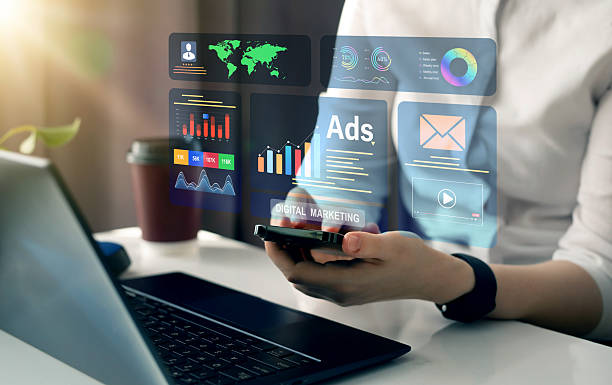
In addition to quality content, the technical aspects of a website also play a very important role in the success of on-page SEO.
Website structure and loading speed are two key factors that directly impact both user experience (UX) and the ability of search engines to crawl and index your site.
A logical and hierarchical website structure helps search engines easily find, understand, and index your pages.
This structure should follow a logical categorization, allowing users and search engine crawlers to easily navigate from the homepage to category pages, and then to product pages or articles.
Using meaningful and keyword-rich URLs not only helps search engines better understand the page’s topic but is also clearer and more comprehensible to users.
Page loading speed is also of high importance.
Today’s users are impatient and expect web pages to load in a fraction of a second.
If your site is slow, not only might users leave it (increasing the Bounce Rate), but search engines also give lower rankings to slow sites.
Google has identified loading speed as an important ranking factor, especially with the introduction of Core Web Vitals, which provide specific metrics for measuring user experience, including loading speed.
To improve loading speed, you can take several actions, including image compression, using browser caching, optimizing code (CSS, JavaScript, HTML), using a CDN (Content Delivery Network), and choosing powerful hosting.
Responsive and mobile-friendly design is another vital aspect of technical on-page SEO.
Given the increasing use of mobile devices to access the internet, your website must display correctly on all devices and provide a consistent user experience.
This is not only important for users, but Google also gives special importance to mobile-friendly sites in its ranking.
Technical website optimization ensures that all your efforts in content creation and on-page SEO bear fruit, and that your website is structurally optimized for both search engines and users, greatly enhancing your site’s performance for on-page SEO.
Do you have an e-commerce website but your sales aren’t as expected? Rasawweb, specializing in professional e-commerce website design, solves your problem forever!
✅ Significant increase in conversion rate and sales
✅ Unparalleled user experience for your customers
⚡ Click to get free e-commerce website design consultation!
Title Tags and Meta Descriptions: Amazing Impact on On-Page SEO
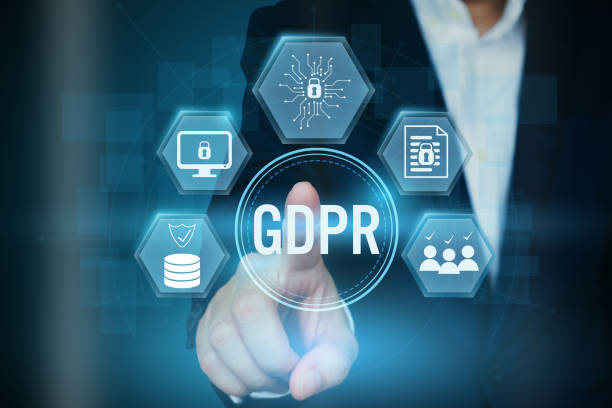
Title Tags and Meta Descriptions, though they may seem small, are among the most powerful elements in an on-page SEO strategy.
These two elements are the first thing users see about your website on the search engine results page (SERP) and play a vital role in their decision to click on your link.
**Title Tag:** This tag is the main title of your page, displayed at the top of the browser tab and as the largest and most noticeable text in search results.
The title tag should include the page’s main keyword, be engaging and persuasive, and accurately describe the page’s content.
The optimal length for a title tag is typically between 50 and 60 characters to be fully displayed in search results.
Intelligent use of keywords at the beginning of the title can help search engines quickly identify the page’s relevance to the user’s query.
Remember that each page should have a unique title tag.
This is a specialized step in on-page SEO that should not be overlooked.
**Meta Description:** This is a short text displayed below the page title in search results.
Although meta descriptions are not directly a ranking factor, they play a very important role in increasing click-through rate (CTR).
A good meta description should provide an attractive and persuasive summary of the page’s content, include relevant keywords, and encourage users to click.
The standard length for meta descriptions is usually between 150 and 160 characters.
Writing an entertaining yet informative meta description can make a big difference in attracting traffic.
Using a call-to-action (Call-to-Action) in the meta description can also be very effective.
Similar to the title tag, each page should have its unique meta description.
Optimizing these two elements demonstrates a comprehensive approach to on-page SEO that satisfies both search engine requirements and provides users with the best experience in search results.
These simple but powerful actions can significantly impact the amount of traffic entering your site and directly affect the overall success of your on-page SEO strategy.
Internal Linking: The Driving Force of On-Page SEO
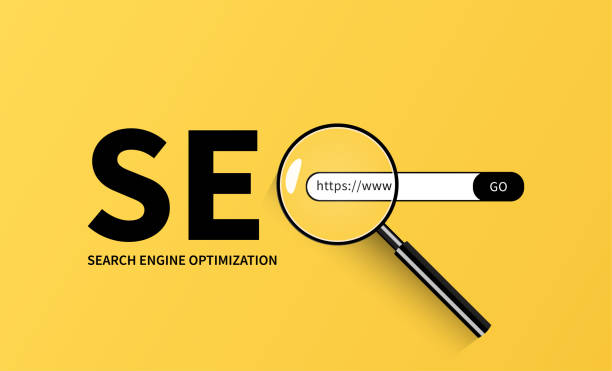
Internal Linking is one of the most important, yet often overlooked, aspects of on-page SEO.
Internal links are hyperlinks that connect one page of your website to another page within the same website.
Their importance lies not only in improving user experience, but also in distributing SEO power and authority (Link Equity) throughout the site and helping search engines better understand your website’s structure and discover new pages.
The first and most important benefit of internal linking is improved user navigation.
When users can easily move between related pages on your site, their user experience improves, and the likelihood of them staying longer on the site and visiting more pages increases.
This, in turn, can reduce the bounce rate and increase dwell time, sending positive signals to search engines.
From an SEO perspective, internal links help search engines understand your website’s hierarchical structure.
They indicate which pages are more important and what relationships exist between different pages.
When a powerful page (with high SEO authority) links to other pages, it transfers a portion of that authority to those pages, which helps improve their ranking.
This process is sometimes known as ‘passing link juice.’
Important tips for internal linking include using descriptive and relevant anchor texts.
Instead of using generic phrases like ‘click here,’ use text that accurately describes the content of the destination page and includes relevant keywords.
Also, creating a ‘content hub’ or ‘pillar page’ that comprehensively covers a broad topic and then links to more detailed and specialized articles, is a powerful strategy in on-page SEO.
This approach helps search engines recognize your expertise in a specific area and gives it more credibility.
With a precise internal linking strategy, you can optimize the flow of traffic and authority within your site and harness the full potential of on-page SEO.
This is a key guideline that can significantly impact your site’s overall SEO performance.
Images and Videos: A Vital Element in On-Page SEO

While textual content forms the core of on-page SEO, visual elements such as images and videos also play an important role in improving user experience and SEO performance.
Proper optimization of these media can significantly help your website appear in image and video search results and also increase user interaction with your content.
**Image Optimization:**
The first step in image optimization is choosing the right format (such as WebP for web) and compressing their file size without significant quality loss.
Large images can drastically reduce page loading speed, which, as previously mentioned, is an important ranking factor in on-page SEO.
The most crucial aspect of image SEO, is the correct use of Alt Text.
Alt text provides a short and accurate description of the image content, which is important for search engines and users who cannot see the image (such as visually impaired users who use screen readers) importance.
Using relevant keywords in the Alt text, without overstuffing, can help search engines better understand the image’s topic and consequently, the overall page topic.
The image file name should also be meaningful and contain keywords (e.g., instead of “image123.jpg”, use “successful-on-page-seo.jpg”).
**Video Optimization:**
Videos are of particular importance due to their high ability to attract an audience and increase dwell time on the page.
To optimize video, ensure that the video file is optimized and has appropriate loading speed.
Using Schema Markup (Schema Markup) for videos helps search engines obtain more information about the video (such as title, description, duration, and thumbnail image) and display it as rich results in search results.
Creating a transcript (Transcript) or subtitles for videos can also help SEO, as search engines can index the video’s text content and display it for relevant keywords.
Hosting videos on specialized platforms such as YouTube and then embedding them on your website, can help reduce server load and benefit from the SEO authority of those platforms.
By properly optimizing images and videos, you not only improve user experience, but also add another valuable layer to your on-page SEO strategy and increase the chances of your visual content being seen in search results.
This is a practical and specialized guide that should be taken seriously.
To help optimize images in on-page SEO, refer to the table below:
| Image Optimization Element | Description | Impact on On-Page SEO |
|---|---|---|
| Alt Text | A short and precise description of the image content for search engines and screen readers. | Helps with image indexing, improves accessibility, and page topic understanding. |
| File Name | Using descriptive and keyword-rich names for the image file. | Helps search engines understand image content before loading. |
| Size and Compression | Reducing image file size without significant quality loss to improve loading speed. | Increases site speed, which is an important ranking factor in on-page SEO. |
| Image Format | Using optimized formats like WebP or JPEG for web images. | Optimizes image loading and display across different browsers. |
User Experience (UX) and On-Page SEO: An Intimate Relationship

Today, the boundary between User Experience (UX) and SEO has increasingly blurred.
Google and other search engines are increasingly emphasizing UX-related factors to determine website rankings.
This means that on-page SEO is no longer just about optimizing for search robots, but also about creating an unparalleled experience for users.
A website with strong UX keeps users satisfied, encourages them to stay longer on the site, and makes them interact more with the content.
These behaviors send important positive signals to search engines.
Factors such as Bounce Rate, Dwell Time, and Click-Through Rate (CTR) in search results, are all important indicators that Google uses to evaluate the quality of a website’s user experience.
If users immediately leave your site after entering it (high bounce rate) or spend very little time on it, this indicates to Google that your content does not adequately meet user needs or provides an inadequate user experience.
Conversely, strong UX leads to a low bounce rate and high dwell time, which directly contributes to improved SEO rankings.
Key UX aspects that influence on-page SEO include: easy and intuitive navigation (users should be able to easily find what they are looking for), content readability (using appropriate font, sufficient text size, short paragraphs, and headings), responsive and mobile-friendly design (ensuring the website displays correctly on all devices), and page loading speed (as previously mentioned).
A visually appealing and user-friendly website can naturally attract more visitors and encourage them to explore the site further.
This is an in-depth analysis that shows how investing in improving user experience, is in fact, an investment in on-page SEO and the sustainable growth of your website.
Ultimately, the goal of SEO is to provide the best possible experience for users, because search engines also pursue this goal, and this is a fundamental principle in modern on-page SEO.
Tired of your e-commerce website not generating as much revenue as it could? Rasawweb, specializing in professional e-commerce website design, solves this problem forever!
✅ Increased sales and revenue rates
✅ High loading speed and unparalleled user experience
⚡ Get Free E-commerce Website Design Consultation
Essential Tools for On-Page SEO Analysis and Performance Monitoring
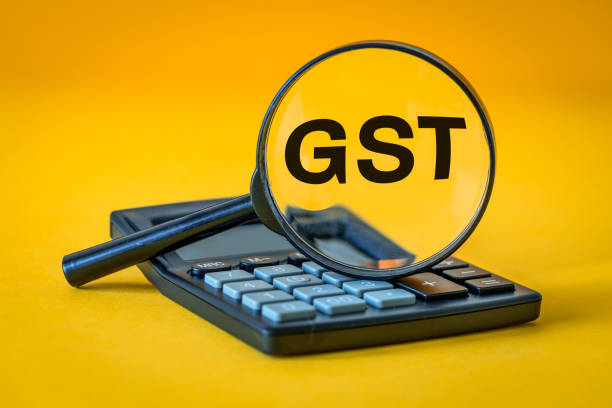
To ensure the effectiveness of your on-page SEO strategy, you need to use appropriate tools for analysis and performance monitoring.
These tools help you identify technical and content issues, measure your progress, and discover new opportunities for improvement.
An analytical and data-driven approach to on-page SEO keeps you on the right track.
1.
Google Search Console (GSC): This free Google tool is an invaluable resource for monitoring your site’s SEO performance.
GSC shows you how your site appears in search results, what keywords have led to your visibility, and which pages have issues.
You can view crawl errors, security issues, and the indexing status of pages.
Additionally, the Core Web Vitals tool in GSC provides information about user experience and page loading speed, which is crucial for technical on-page SEO.
This is a comprehensive guide tool for every webmaster.
2.
Google Analytics: This other free Google tool provides detailed and comprehensive information about user behavior on your site.
You can see where users came from, how long they stayed on your site, which pages they visited, and their bounce rate.
Analyzing this data helps you identify the strengths and weaknesses of your content and optimize your on-page SEO strategy based on actual user behavior.
3.
Keyword Research Tools (e.g., Google Keyword Planner, Ahrefs, SEMrush): These tools help you find keywords relevant to your business, evaluate their search volume and ranking difficulty, and discover new content ideas.
These tools are essential for the planning and execution phases of content on-page SEO.
4.
Website SEO Audit Tools (e.g., Screaming Frog, Sitechecker.pro): These tools can crawl your site and identify technical on-page SEO issues such as broken links, duplicate title tags and meta descriptions, non-indexed pages, and loading speed problems.
This is a specialized tool that allows you to conduct a comprehensive analysis of your site’s on-page SEO.
By regularly using these tools, you can continuously monitor your on-page SEO performance, quickly resolve issues, and capitalize on new growth opportunities.
This is an educational and practical approach that ensures your SEO efforts are based on real, measurable data.
Advanced Strategies and the Future of On-Page SEO
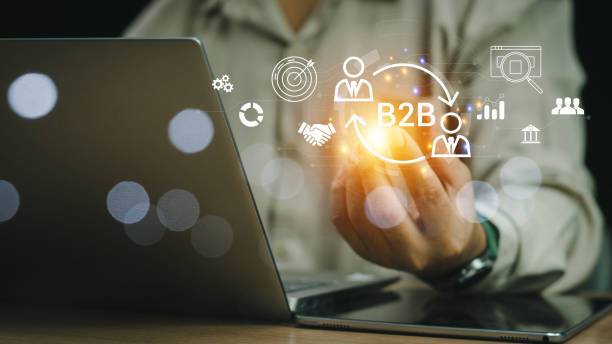
SEO is a dynamic and evolving field, and on-page SEO is no exception.
To stay ahead of the competition and ensure the stability of your rankings, you need to be familiar with advanced strategies and future trends in on-page SEO.
This is a news and analytical approach that helps you always stay one step ahead.
1.
Schema Markup and Structured Data: Using Schema Markup helps search engines better understand your content and display it as Rich Snippets in search results (such as star ratings for products, contact information, recipes, etc.).
This not only increases your website’s visibility in SERPs but also improves click-through rates.
Schema is an important component of advanced on-page SEO.
2.
Optimizing for Voice Search: With the increasing use of voice assistants like Siri, Alexa, and Google Assistant, optimizing content for voice search has become increasingly important.
Voice searches are typically longer, more conversational, and question-based.
This means you need to focus on long-tail keywords and direct answers to user questions to appear in voice search results.
This is a new opportunity for improving on-page SEO.
3.
User Intent-Based Content: The future of on-page SEO is moving towards a deeper understanding of user intent behind each search.
Producing content that precisely answers users’ questions and needs, regardless of exact keywords, will be a priority.
This means you need to think beyond keywords to the user’s actual needs.
4.
Artificial Intelligence (AI) and Machine Learning in SEO: Google’s algorithms are increasingly using AI and machine learning to understand content and user intent (such as the BERT and MUM algorithms).
This means your content needs to be more natural and of higher quality to be well understood by these algorithms.
Focusing on producing comprehensive, authoritative, and valuable content for users, is the best way to adapt to these changes.
5.
Core Web Vitals and Page Experience: As previously mentioned, Core Web Vitals have become an official ranking factor.
Ensuring that your website performs well on these metrics, will be crucial for on-page SEO in the coming years.
By considering these advanced strategies and future trends, you can ensure that your on-page SEO strategy is optimized and effective not only for today, but also for the future of the search world.
This is a strategic plan for every webmaster seeking long-term success.
Frequently Asked Questions
| Question | Answer |
|---|---|
| What is On-Page SEO? | It refers to the set of actions performed within a website to improve its ranking in search engines. |
| Why is On-Page SEO important? | Because it helps search engines better understand your site’s content and structure, and it improves the user experience. |
| What are the most important elements of On-Page SEO? | Title and meta descriptions, keywords, URL structure, quality content, image optimization, internal linking, and site speed. |
| How to optimize Title Tags and Meta Descriptions? | The title should include the main keyword and be engaging, and the meta description should be a persuasive summary of the content with relevant keywords. |
| What is the role of keywords in On-Page SEO? | Keywords tell search engines what the page content is about and should be used naturally and intelligently within the text. |
| How is image optimization for On-Page SEO done? | By compressing file size, using descriptive file names, and filling Alt tags with relevant descriptions and keywords. |
| What is Internal Linking and what is its use? | It is connecting different pages of the site to each other. This helps distribute page authority and improves search engine crawling. |
| What is the importance of site loading speed in On-Page SEO? | High speed improves user experience and is one of the important ranking factors for search engines like Google. |
| What is the impact of site responsiveness (Mobile-Friendliness) on On-Page SEO? | Given the increase in mobile users, responsiveness is essential for providing a suitable user experience on all devices and for Google’s mobile-first indexing. |
| What are the important content-related factors in On-Page SEO? | Originality, quality, comprehensiveness, readability, proper use of headings (H1, H2, etc.), and regular content updates. |
And other services of Rasawweb Advertising Agency in the field of advertising
Smart Link Building: An effective tool for user engagement through user experience customization.
Smart Direct Marketing: A specialized service for growing user engagement based on intelligent data analysis.
Smart SEO: Professional optimization for campaign management using intelligent data analysis.
Smart Custom Software: Revolutionize customer behavior analysis with the help of Google Ads management.
Smart Direct Marketing: A novel service for improving SEO ranking through Google Ads management.
And over hundreds of other services in the fields of internet advertising, advertising consultation, and organizational solutions.
Internet Advertising | Advertising Strategy | Advertorials
Sources
Complete Guide to On-Page SEO on Digikala Mag
How to Improve Your Site’s On-Page SEO?
Review of Important Factors in On-Page SEO
Advanced On-Page SEO Techniques from SEOkaran
? For your business’s leap in the digital world and reaching more customers, Rasawweb Afarin Digital Marketing Agency, specializing in user-friendly website design and comprehensive online marketing solutions, is with you.
📍 Tehran, Mirdamad Street, next to Central Bank, Southern Kazeroun Alley, Ramin Alley, No. 6



